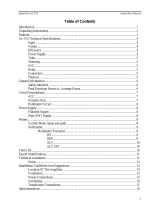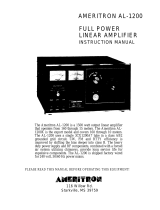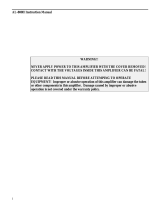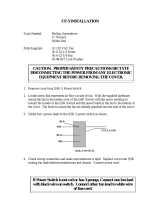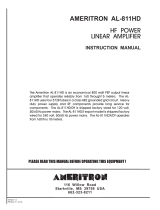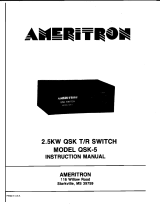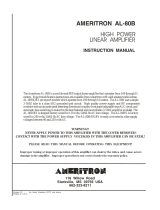
AL-800 Instruction Manual
i
TABLE OF CONTENTS
Unpacking Instructions....................................................................................................1
Features............................................................................................................................3
AL-800 Technical Specifications....................................................................................4
General Information.........................................................................................................6
Safety Interlock....................................................................................................6
ALC .....................................................................................................................6
Dynamic Bias.......................................................................................................7
Timer - Overload Circuits................................................................................................7
Grid Overload Protection.....................................................................................7
Thermal Overload................................................................................................8
Cathode Warm-up Timer.....................................................................................8
Power Supply...................................................................................................................8
Heater Supply ......................................................................................................8
Plate (HV) Supply................................................................................................8
Meters..............................................................................................................................9
Current Meter (plate and grid):............................................................................9
Multimeter...........................................................................................................9
Multimeter Functions ..........................................................................................9
Wattmeter Circuit ................................................................................................10
Peak Envelope Power vs. Average Power...........................................................10
Tube Life .........................................................................................................................10
Export Modifications.......................................................................................................12
Technical Assistance .......................................................................................................12
Installation Guidelines and Suggestions..........................................................................13
Location Of The Amplifier.................................................................................13
Ventilation...........................................................................................................13
Power Connections..............................................................................................13
Grounding............................................................................................................14
Transformer Connections ................................................................................................15
Jumper Connections.............................................. ..........................................................15
Interconnections...............................................................................................................15
Operating Instructions And Guidelines ...........................................................................16
Front Panel Controls............................................................................................16
Driving Power......................................................................................................17
Tube and Component Life...................................................................................18
Additional SSB Notes..........................................................................................18
AM (Amplitude Modulation) Operation .............................................................19
Audio Distortion..................................................................................................19
FM (Frequency Modulation), RTTY, and DIGITAL OPERATION...................19
ALC Metering, Controls, and Adjustments.....................................................................19
ALC Metering Functions.....................................................................................19
ALC Controls.......................................................................................................20
ALC Adjustments................................................................................................20
Rear-panel "ALC LIMIT" control .......................................................................21




















